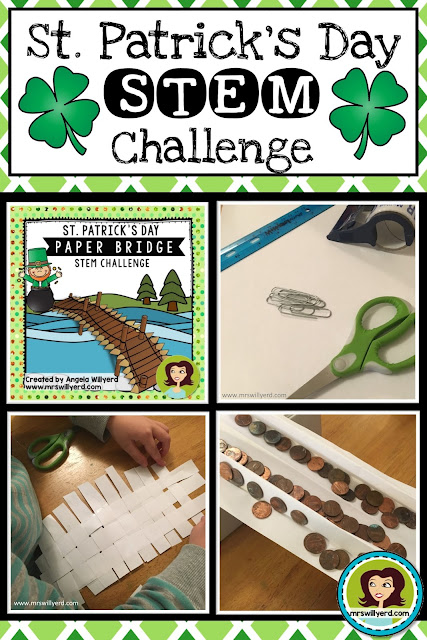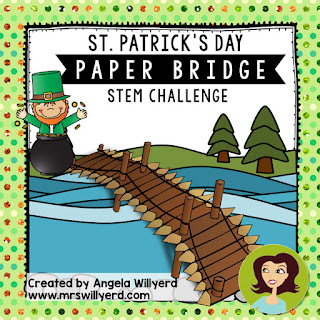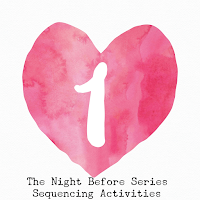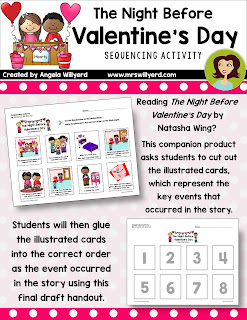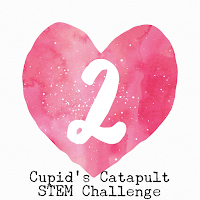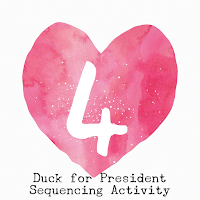February can be lots of fun in the classroom! Do you know what is even more fun? Winning a
$10 TpT Gift Card to use during the big
#BeMine TpT Sitewide Sale during February 7-8!
You can also save up to 28% on your winter must-haves by entering the coupon code: LoveTpT when you check out.
Want more chances to win? Just visit a few of my blogging buddies to enter for another chance at a $10 TpT Gift Card. If you visit everyone in our blog hop, you could win up to $110 in TpT Gift Cards. Sounds good, right?
So how do you enter? Read about my Top 5 February Favorites and then complete the Rafflecopter entry. Be sure to click on the button at the end of this post to be directed to the next post in the hop.
Hurry! The giveaway ends at 11:59 PM (EST) on Tuesday 02/07. The winner will be notified via e-mail by noon (EST) on Wednesday, so you will have time to fill up your TpT cart with lots of goodies before the end of the sale!
The
Night Before Series is a favorite at my house! We love all the fun books that accompany each and every holiday. I enjoy creating sequencing activities as a book companion.
Each
sequencing activity includes illustrated cards of key events within the story, which enables the students to practice their comprehension and re-telling abilities. Students just simply listen to the story, cut, sort, and paste onto a final copy.
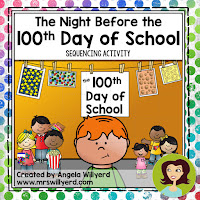
The class can also check their results using an interactive presentation - available in both PowerPoint and SMART Notebook - which provides them with immediate feedback as they attempt to place the cards in the correct order on the slide.
Here's an example of
The Night Before the 100th Day of School Sequencing Activity:
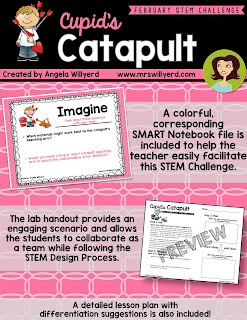 Cupid's Catapult STEM Challenge
Cupid's Catapult STEM Challenge sets the stage to engage with a STEM Story about poor Cupid, who needed an upgrade to his bow and arrow technology with a catapult that would launch piercing hearts far distances.
The students follow the STEM Design Process to design and build a catapult prototype made out of a limited amount regular household items within a certain period of time. The students then test the prototype and troubleshoot to determine how to make the catapult launch the marshmallow heart even farther during the next trial.
The corresponding presentation and student handout makes this STEM Challenge super easy for a teacher to facilitate. Available in
Grades 3-5 and
Grades 5-8.
Out of this World Conversation Heart Science Lab is a great way to use those conversation hearts plus practice following the scientific method - developing a scientific question, writing a hypothesis, analyzing data, and determining a conclusion.
Students are presented with a scenario where an alien is curious about the astronaut's candy hearts. The astronaut then invites the alien into the space station to conduct an experiment to see if different temperatures of water will affect the candy heart.
This lab activity is available for
Grades 3-5 and
Grades 5-8.

Mid-February brings Presidents' Day!
Duck for President Sequencing Activity is a fabulous companion activity to the hilarious book.
Students will cut out the illustrated cards, sort, and paste the events into the correct order on the final template.
An interactive PowerPoint or SMART Notebook file allows students to receive immediate feedback when modeling the activity or checking the answers as a class.

Have your students ever thought about what they would do if they were president?
The
If I Were President Narrative Writing Prompt encourages students to brainstorm what they would do first, then, next, and finally.
Students can then write and illustrate a final copy that would be a perfect bulletin board or hall display! (And, I imagine some really interesting reading!)
a Rafflecopter giveaway
Keep the blog hop going by clicking on the button below to visit
Rachael at Sweet, Sweet Primary for your next chance to win!














